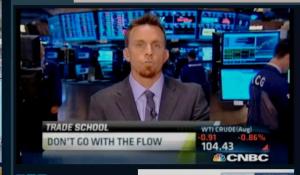 MarketsMuse Editor Note: On the heels of the recent announcement that the proposed Bitcoin ETF aka “Winklevoss Bitcoin Trust” with slated ticker symbol COIN is about to be bankable by ETF traders and investors, below extract courtesy of Traders Magazine Online News, July 15, 2014, written by Gregg Wirth
MarketsMuse Editor Note: On the heels of the recent announcement that the proposed Bitcoin ETF aka “Winklevoss Bitcoin Trust” with slated ticker symbol COIN is about to be bankable by ETF traders and investors, below extract courtesy of Traders Magazine Online News, July 15, 2014, written by Gregg Wirth
Bitcoin, the crypto-currency that initially became infamous as the tender of choice for drug traffickers and mercenaries, may be coming to a trading desk or institutional portfolio near you – and sooner than you think.
“2014 is going to be the year Bitcoin hits Wall Street,” said Barry Silbert, founder and CEO of SecondMarket, a capital-raising platform for private companies and investment funds. Indeed, there is a growing consensus in some corners of Wall Street and the buyside community that the $7.8 billion Bitcoin industry is going to become the new, flashy darling of investors, with dedicated digital currency funds, venture capitalists and asset managers all chasing after those 12 million bitcoins currently in circulation.
“Digital currencies like Bitcoin are not going away,” Silbert explained. “And Wall Street and the regulators know this, they’ve studied how to deal with it, and now they are starting to understand its potential.” SecondMarket has gone heavy into the Bitcoin phenomenon, launching the Bitcoin Investment Trust, a $70 million open-ended trust that invests exclusively in bitcoins, as well as a dedicated desk of 10 traders who buy and sell bitcoins for the trust and other institutional clients. SecondMarket is also creating what it hopes to be the largest, best-capitalized and well-run Bitcoin exchange in the U.S., and is enlisting banks and Bitcoin-related firms to be exchange members. Continue reading








 Extract courtesy of Spencer Jakab, Wall St. Journal. Full article available via clicking on WSJ logo on left side..
Extract courtesy of Spencer Jakab, Wall St. Journal. Full article available via clicking on WSJ logo on left side..